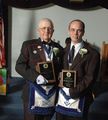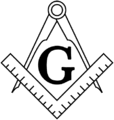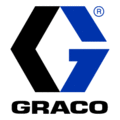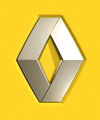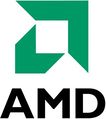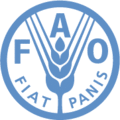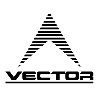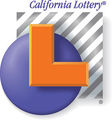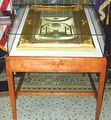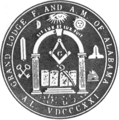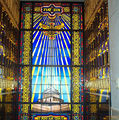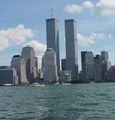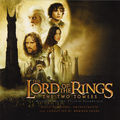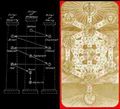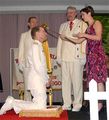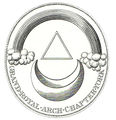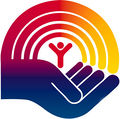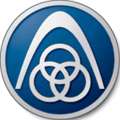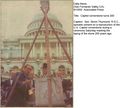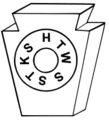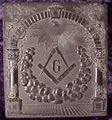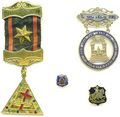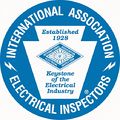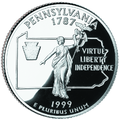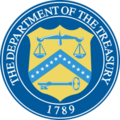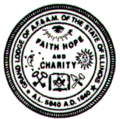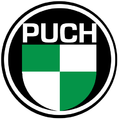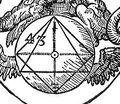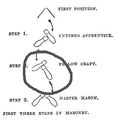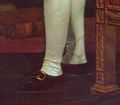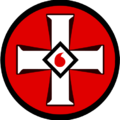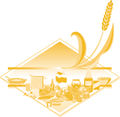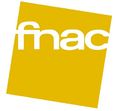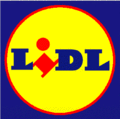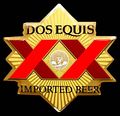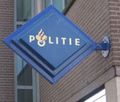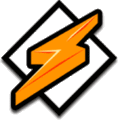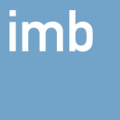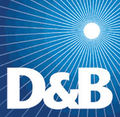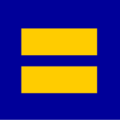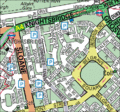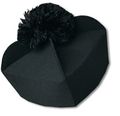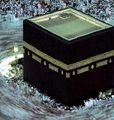Difference between revisions of "911:Occult symbolism XIV"
Commendatori (talk | contribs) |
Commendatori (talk | contribs) |
||
| Line 117: | Line 117: | ||
** The role of Saturn from Marsilio Ficino’s psycho-astrological perspective provides evidence for the assertion that the modern Square & Compasses may be derived from the '''[[911:Occult_symbolism_V#Sigil|Sigil of Saturn]]'''. | ** The role of Saturn from Marsilio Ficino’s psycho-astrological perspective provides evidence for the assertion that the modern Square & Compasses may be derived from the '''[[911:Occult_symbolism_V#Sigil|Sigil of Saturn]]'''. | ||
*** If scholars look for proof, it has been written in stone. Another instance of the Sigil of Saturn appears on the tomb of Robert Shaw, in Dumferline, Scotland (obit 1602). Shaw was master of works for his Catholic majesty James VI of Scotland. His role in the introduction of hermetic interests into existing ancient and medieval rituals of the craft guilds of Scottish stonemasons has been thoroughly documented by Scottish historian and professor emeritus of St. Andrew’s University, David Stevenson. The appearance of the Sigil of Saturn on Shaw’s tomb plants the question of its significance for him, given his interests. It becomes strong evidence that the sigil is the direct antecedent of the now familiar Square & Compasses of modern Freemasonry, in part because of the overlapping angles, and also because of the discernibly esoteric meaning they share. In form similar, in meaning the same, the Sigil of Saturn alludes to the limit of the mutable universe, whose solid is the '''cube'''. Beyond the mutable universe of the planets lies the immutable expanse of the celestial sphere – hence the compasses... In summary, beginning in the late sixteenth century and continuing through the seventeenth, Shaw, Moray and their brethren had opportunity, in the social and intellectual milieu that employed elements from the corpus of esoteric symbols; motive, as Stevenson shows in their deliberate incorporation of such interests into the lodges, '''as more men were “accepted” into the fraternity; and means, as has been seen in the Sigil’s similar form and identical esoteric references to that of the Square & Compasses, i.e., moving beyond the “square” of the earthbound and aspiring to the contemplation of the Creator,''' dwelling beyond the fixed stars, who had created the orbs and their orbits. [http://www.esoteric.msu.edu/VolumeV/CURIOUS.htm#_ednref23] | *** If scholars look for proof, it has been written in stone. Another instance of the Sigil of Saturn appears on the tomb of Robert Shaw, in Dumferline, Scotland (obit 1602). Shaw was master of works for his Catholic majesty James VI of Scotland. His role in the introduction of hermetic interests into existing ancient and medieval rituals of the craft guilds of Scottish stonemasons has been thoroughly documented by Scottish historian and professor emeritus of St. Andrew’s University, David Stevenson. The appearance of the Sigil of Saturn on Shaw’s tomb plants the question of its significance for him, given his interests. It becomes strong evidence that the sigil is the direct antecedent of the now familiar Square & Compasses of modern Freemasonry, in part because of the overlapping angles, and also because of the discernibly esoteric meaning they share. In form similar, in meaning the same, the Sigil of Saturn alludes to the limit of the mutable universe, whose solid is the '''cube'''. Beyond the mutable universe of the planets lies the immutable expanse of the celestial sphere – hence the compasses... In summary, beginning in the late sixteenth century and continuing through the seventeenth, Shaw, Moray and their brethren had opportunity, in the social and intellectual milieu that employed elements from the corpus of esoteric symbols; motive, as Stevenson shows in their deliberate incorporation of such interests into the lodges, '''as more men were “accepted” into the fraternity; and means, as has been seen in the Sigil’s similar form and identical esoteric references to that of the Square & Compasses, i.e., moving beyond the “square” of the earthbound and aspiring to the contemplation of the Creator,''' dwelling beyond the fixed stars, who had created the orbs and their orbits. [http://www.esoteric.msu.edu/VolumeV/CURIOUS.htm#_ednref23] | ||
*** The role Saturn played in the astrologically based proto-psychology of the Renaissance, further supports the view that the Sigil of Saturn was an immediate precursor to the Square & Compasses. Indeed, the heuristic labyrinth becomes especially curious, a most irresistible one for Western Europeans, when we recognize that the only hermetic tradition of Europe in which both of these symbols have played a part is Freemasonry. [http://www.esoteric.msu.edu/VolumeV/CURIOUS.htm#_ednref23] | |||
* Compass and Square: | * Compass and Square: | ||
Revision as of 18:07, 3 October 2010
Site menu:
- Occult symbolism Intro
- History of oppression
- Social terrorism
- Economic terrorism
- Occult symbolism pages:
- Introduction to symbolism
- Part I (Egyptian mythology, Pyramid, All-seeing eye, Obelisk)
- Part II (Astrology)
- Part III (Stars)
- Part IV (Cross, Rods, Awen, Thunderbolt, Bell, Shell)
- Part V (Occultism)
- Part VI (Circles, Infinity, Spirals)
- Part VII (Deities)
- Part VIII (Colors)
- Part IX (Alphabets)
- Part X (Animals, Insects, Arachnids)
- Part XI (Plants)
- Part XII (Life, Death, Sexuality)
- Part XIII (Alchemy)
- Part XIV (Masonic symbolism)
- Part XV (Masonic places)
- Part XVI (Hand signs)
- Part XVII (Occult Media Programming)
Masonic
- See also:
Masons in regalia
- See also: Masons
The October 1956 cover of LIFE magazine showing a pyramid of masons.
Two Masons pose with plaques. The Mason at left is wearing a Maltese cross medal on his right jacket lapel.
Two Australian Masons shaking hands, in front of the Worshipful Master's chair.
Two Masons standing at attention.
African-American Masons walking down the main street of an unknown town.
A Co-Mason wearing a Compass & Square adorned dress and hat.
Annie Besant
(b. 1847 - d. 1933)
Co-Mason Besant with her 33rd degree sash and double headed eagle adorned hat.
- Groups of Co-Masons:
Photo from the 1950's showing female members belonging to the Order of the Eastern Star.
Masonic ritual
1st degree
- Various notes:
- Ritual for the Entered Apprentice or the First Degree of Freemasonry:
- Oath of the Entered Apprentice: "All this I most solemnly, sincerely promise and swear, with a firm and steadfast resolution to perform the same, without any mental reservation or secret evasion of mind whatever, binding myself under no less penalty than that of having my throat cut across, my tongue torn out by its roots, and my body buried in the rough sands of the sea, at low-water mark, where the tide ebbs and flows twice in twenty-four hours, should I ever knowingly violate this my Entered Apprentice obligation. So help me God, and keep me steadfast in the due performance of the same." [36]
- Note: All black and white illustrations are from Duncan's Masonic Ritual and Monitor. (c. 1866)
This photo shows the Candidate as dressed to receive the degree of the Entered Apprentice, complete with a Cable-Tow around his neck.
Pink's Masonic Initiation during the 2009 MTV Video Music Awards (giant Freemasonic Ritual)- This is identical to the First Degree masonic initiation of hoodwinking and bare left chest [1]
1800's era illustration showing the Candidate swearing the oath of the Entered Apprentice, upon the alter of the Masonic Lodge.
From left to right: the Worshipful Master, alter and lights, the Candidate and the Conductor.The Candidate being conducted once around the Lodge by the Conductor after having received the First Degree of the Entered Apprentice.
This illustration shows the various "stops" in the Lodge that the Candidate must make upon receiving the First Degree of the Entered Apprentice.
1700's illustration depicting the initiation ritual for the Entered Apprentice degree of Masonry.
- Hand signs of the Entered Apprentice:
Sign of an Entered Apprentice.
Duegard of an Entered Apprentice.
The grip or pass grip of an Entered Apprentice.
2nd degree
- Various notes:
- Ritual for the Fellow Craft or the Second Degree of Freemasonry:
The Candidate properly prepared for the ritual of receiving the Second Degree.
The Candidate taking the oath of a Fellow Craft.
From left to right: the Worshipful Master, alter and lights, the Candidate and the Conductor.
- Hand signs of the Fellow Craft:
Sign of the Fellow Craft Mason.
Duegard of the Fellow Craft Mason.
The grip or pass grip of a Fellow Craft.
The real grip of a Fellow Craft.
- Fellow Craft apron:
- Fellow craft's apron.jpg
The apron of the Fellow Craft, is worn with one corner of the flap turned up.
3rd degree
(todo)
4th - 33rd degrees
(todo)
Grand lodges
- Various notes:
United Grand Lodge of England, London, United Kingdom.
Founded in 1717(see previous) [2]
Grand lodge Canada, Ontario, Canada.
Masonic temple-lodge Pannetier-Grand Orient, France.
Note: the pyramid, the checkerboard floor, the sun and the 5-pointed star symbols on the ceiling.
Organizational diagrams
Masonic York Rite degrees (see also: [4], [5])
Note that the symbols of the three highest grades are Catholic/sun symbols (see crosses used by the crusaders)"Structure of Freemasonry": The York Rite and the Scottish Rite.
Emblematic structure of freemasonry (York Rite and Scottish Rite).
Drafting Compass and Square
- Various notes:
- To research: "(Masonic) speculation on the symbol of Square and Compasses"
- The role of Saturn from Marsilio Ficino’s psycho-astrological perspective provides evidence for the assertion that the modern Square & Compasses may be derived from the Sigil of Saturn.
- If scholars look for proof, it has been written in stone. Another instance of the Sigil of Saturn appears on the tomb of Robert Shaw, in Dumferline, Scotland (obit 1602). Shaw was master of works for his Catholic majesty James VI of Scotland. His role in the introduction of hermetic interests into existing ancient and medieval rituals of the craft guilds of Scottish stonemasons has been thoroughly documented by Scottish historian and professor emeritus of St. Andrew’s University, David Stevenson. The appearance of the Sigil of Saturn on Shaw’s tomb plants the question of its significance for him, given his interests. It becomes strong evidence that the sigil is the direct antecedent of the now familiar Square & Compasses of modern Freemasonry, in part because of the overlapping angles, and also because of the discernibly esoteric meaning they share. In form similar, in meaning the same, the Sigil of Saturn alludes to the limit of the mutable universe, whose solid is the cube. Beyond the mutable universe of the planets lies the immutable expanse of the celestial sphere – hence the compasses... In summary, beginning in the late sixteenth century and continuing through the seventeenth, Shaw, Moray and their brethren had opportunity, in the social and intellectual milieu that employed elements from the corpus of esoteric symbols; motive, as Stevenson shows in their deliberate incorporation of such interests into the lodges, as more men were “accepted” into the fraternity; and means, as has been seen in the Sigil’s similar form and identical esoteric references to that of the Square & Compasses, i.e., moving beyond the “square” of the earthbound and aspiring to the contemplation of the Creator, dwelling beyond the fixed stars, who had created the orbs and their orbits. [37]
- The role Saturn played in the astrologically based proto-psychology of the Renaissance, further supports the view that the Sigil of Saturn was an immediate precursor to the Square & Compasses. Indeed, the heuristic labyrinth becomes especially curious, a most irresistible one for Western Europeans, when we recognize that the only hermetic tradition of Europe in which both of these symbols have played a part is Freemasonry. [38]
- Compass and Square:
Freemasonry logo.
The letter "G" can stand for: 'God', Geb, Great Architect of the Universe ("GAOTU"), Generative, Geometry, Gate (a gate-way to higher realms: the inner-space of consciousness-awareness, and the outer-space of the cosmic galaxies)."Structure of Freemasonry": The York Rite and the Scottish Rite.
The egyptian god Geb. Inspiration for the compass and square?
Graco makers of paint straying equipment
Best Western. Above the "W", looks exactly like the symbol used by Renault
Rockefeller Center - building complex. See also the Prometheus Bound statue, and the Greek god legend: Prometheus Bound
Advanced Micro Devices
Note it also forms a canted square.The Associated General Contractors of America
Note: "G" in center.Anheuser-Busch brewing company.
The top of the "A" is the compass and the upward lifting wings are the squareLogo of the San Jose Sharks, a professional U.S. hockey team located in San Jose, California
Lockheed Martin
Note: This logo resembles an unfinished Pentagram and was probably inspired from the Salyut Program logo
Baseball fields? You have to wonder.
Note: pitchers mound in center where "G" would go, oblong square bases, pentagram-shaped home plate. Note also the Jefferson National Expansion Memorial arch in the background.The Ant Bully - animation film released by Legendary Pictures and Warner Bros.
"In other parts of the film Egyptology is a clear reference as the Great Pyramids are shown as well as a nod to the 'all seeing eye'." [6]Logo of the Food and Agriculture Organization (FAO) of the United Nations. Somewhat suspicious shapes.
- Compass only
(c. 1955-1990)
Emblem of the Deutsche Demokratische Republik (German Democratic Republic)London Eye, London, UK
This is the biggest Ferris wheel in Europe. It was formally opened by Mason Tony Blair, at 20:00 GMT on 31 December 1999.
See also: [7], [8].The Petronas Towers in Malaysia.
Note: These towers are also a representation of Jachin & BoazForward Look - the logo of a design theme used between 1955-1961 for Chrysler Corporation vehicles.
Albertsons grocery stores.
Note: This company is run by Mormons, whose religious cult was founded by masons.
- Square only
- Parliament cigs.jpg
The original logo for Klipsch Audio Technologies
Note: the square, arch, and pentagonValvoline (now Ashland Inc.)
Note: pyramid in centerVonage
Note: circle above "V" is where a "G" would go
Two pillars
- Various notes:
- Alternative names: Boaz and Jachin
- 1 Kings 7:21 "And he set up the pillars in the porch of the temple: and he set up the right pillar, and called the name thereof Jachin: and he set up the left pillar, and called the name thereof Boaz."
- 2 Chronicles 3:17 "And he reared up the pillars before the temple, one on the right hand, and the other on the left; and called the name of that on the right hand Jachin, and the name of that on the left Boaz."
- See also: Pillars of Hercules
- Note how often II spheres (or globes) rest on II pillars. These two spheres are sometimes the Sun and Moon, which represent the active and the passive (and thereby reflective) forces of the universe. They want to claim these two realms of the world as theirs.
- The pillars with the globe on top may also represent a phallus.
- Alternative names: Boaz and Jachin
Masonic apron worn by "Brother" George Washington (4 pillars). See also: [9]
Grand Lodge seal of Alabama, US [10]
US House of Representatives (4 pillars). Different, but still similar. Note: the fasces.
Orange Order (or "Loyal Orange Institution", "Orange Institution"). [11]
See also: "Ancient Order of Hibernians", "Royal Black Knights""Pillars of Charity", in the Scottish Rite temple named The 33° Supreme Council of the World in Washington, D.C.
Note: the "Ordo ab Chao" ("order out of chaos") motto (bottom), "Fiat lux" ("let light be made") motto (top), pyramid and all-seeing eye (top), sun symbolism, double-headed eagle, equal-length sun cross, energy spiral decorations, square temple.(unknown) Catholic building (from 1563) in Antwerp, Belgium. Note also: the Eagle on the globe (top), the Double-headed Eagle on all 3 shields (bottom), the Sun symbol (top), the shields at the bottom, and the sun scepter burning the serpent (bottom right), the stars surrounding Maria, the griffins (2nd floor).
Meaning "SPQA": "SPQR" means "Senātus Populusque Rōmānus" ("Senate and the People of Rome", so "SPQA" means "Senātus Populusque Antwerp".
- Two pillars in logos:
The two pillars of the flag of Spain represent the two pillars of Hercules who are thought to be between Gibraltar and Morocco.
- Twin Towers
- Todo:
- List of twin buildings and structures
- LG Twin Towers, Beijing
- LG Twin Towers, Korea
- Todo:
World Trade Center, New York City, US
The Petronas Towers in Malaysia.
Note: the compass symbolism.Poster for the The Lord of the Rings: The Two Towers film, released in 2002.
Third Pïllar
- The Masonic Occult Trinity
- Masonry like nearly all other religions is based upon a symbolic foundation. The true religion, or salvation was designed, created and carried out by the triune God—God, the Father, Son, and Holy Ghost,—three in one. Masonry, a false religion, also has a trinity. Ancient idolatry had its trinities, and modern idolatry has its trinities. Satan, the arch-counterfeiter, is the father of all lies as well as false systems of worship. Now in order to deceive people, and especially an intelligent people, his device, or plan, or counterfeit must be built likewise, so as to appear genuine. [39]
- Incredibly, the symbol used for Satan in Islam is three pillars. During the Hajj, a pilgramage which all Muslims are required to make at least once in their lifetime, they must particpate in the 'Stoning of the Devil' ceremony, who is represented by three giant pillars. The pillars symbolizing the Devil are at the center of giant ramps built to accomodate the huge crowds of pilgrams who must complete the ritual by dusk. Muslim tradition says it was here that the Devil tried to tempt the Prophet Abraham to disobey God when he appeared before him and Ishmael suddenly. Yet, one of the most widely used devices inside Freemasonry to instruct new Masons on the 'Craft' is none other than the 'Three Pillars Tracing Board'... [40]
Masonic initiate standing between the twin pillars as the third pillar [12]
- Two two/three pillars in Kabbalah:
The 'Three Pillars' of Kabbalah [13]
Knighting
- Various notes:
- When a person is knighted he/she submits to - and becomes part of - a specific knighthood-masonic order. In this investiture ceremony, the knight-elect kneels on a knighting-stool in front of the master (eg. the queen, master mason, etc.), who then lays the sword blade on the knight's right shoulder, and arches it over the persons head to the left shoulder.
Ladder
See also:
- Jacob’s Ladder appears in the Tracing Board and is reaching into the Heavens. Jacob was the grandson of Abraham and Sarah, the son of Isaac and Rebecca. Jacob's 12 sons were the ancestors of the 12 tribes of Israel. The 12 tribes of Israel is a reference to the twelve houses of the Zodiac, just like the 12 apostles of Jesus are. That’s why Leonardo Da Vinci portrayed the apostles in 4 groups of three in his painting of the Last Supper separating the zodiac into four seasons. Jacob dreamt of the Milky Way as a ladder with angels ascending and descending it. The ascending angles of course are the up and down moving stars in the sky.
- Gen 28:12
- And he dreamed that there was a ladder set up on the earth, and the top of it reached to heaven; and behold, the angels of God were ascending and descending on it!
- Todo: Kabbalistic concept of the Ladder [41]
Milky Way erect during summer representing Jacob’s Ladder. [17]
Arch
- Various notes:
- When a person is knighted he/she submits to - and becomes part of - a specific knighthood-masonic order. In this investiture ceremony, the knight-elect kneels on a knighting-stool in front of the master (eg. the queen, master mason, etc.), who then lays the sword blade on the knight's right shoulder, and arches it over the persons head to the left shoulder.
"Royal Arch" degree [19] symbolism.
Note the Pigpen cipher of "oti"(correct pigpen cipher?) on the altar.Arch of swords [20]
Arc de Triomphe, Paris, France.
Note: Commissioned in 1806 by Napoleon Bonaparte, a known RosicrucianLouvre Pyramid line-of-sight through an arch pathway.
See also: "Pyramid At The Louvre, in Paris Commissioned By Francois "the Sphinx" Mitterand, A 33 Degree Freemason Of The Grand Orient Lodge".The Jefferson National Expansion Memorial arch. simply another masonic monument?
The Roosevelt Arch, at the north entrance to Yellowstone National Park. The arch's cornerstone was laid in 1903 by Freemason and U.S. President Theodore Roosevelt.
National War Memorial in Ottawa, Canada - originally built in 1939 to commemorate World War I.
- Arches in logos:
Citi
Note: how the arch goes from "i" to "i", which represent the two pillars.International Order of the Rainbow for Girls (IORG). Founded in 1922 by mason and reverend W. Mark Sexson for girls ages 11-21
Note: original name was "Order of the Rainbow for Girls". Also known as "Rainbow Girls".United Way logo, arches?
Thyssen Krupp
Note the intertwined circles. (todo: note SMOM-Nazi partnerships)McDonald's logo with the Golden Arches.
Cornerstone
- U.S. Capitol cornerstone:
(c. 1793)
George Washington laying the cornerstone of the United States Capital in Masonic garb, as chronicled by the Colombian Mirror and Alexandria Gazette of September 18th, 1793. [21](c. 1993)
Newspaper article picture from September 19th, 1993 showing the 200th anniversary ceremony of the laying of the U.S. Capitol cornerstone
- Other cornerstones:
Plaque commemorating the cornerstone laying of the Capitol of South Dakota.
Keystone
- Various notes:
- The Keystone is the locking stone of the Arch. Therefore, the "copestone," being located at the top, is the cap of the entire arch. Consequently, the Royal Arch of Freemasonry, is symbolically regarded as "The Copestone of Ancient Craft Masonry;" otherwise referred to as the "Capitular Rite."
- Keystone in masonic imagery:
The keystone is the symbol for the Royal Arch body of Freemasons.
Note: Also known as the Capitular Rite of Freemasonry
- Statue of Liberty "keystone book":
The "book" that the Statue of Liberty is holding, is in fact a masonic keystone.
- Logo's:
(Est. 1925)
Logo of the International Association of Electrical Inspectors (IAEI)
Note: The oblong square in the center of the keystone.Badge of the Pennsylvania State Police (PSP)
Note: The 8-pointed starH. J. Heinz Company (Founded 1869)
Wealthy global processed-food company. Teresa Heinz-Kerry is the trustee of the Heinz family wealth.
2008 revenue: 10.5 billion
Note: The company's world headquarters is located in Pittsburgh, Pennsylvania
- Other:
Keystone Light beer
(product of Coors Brewing Company)Reverse side of a 1999 Pennsylvania state quarter displaying keystone.
Note: Pennsylvania is known as "the keystone state"
Keys
- Vatican Keys
- A silver key refers to Temporal power. Gold keys represent spiritual power. [42]
- See also: Spiritual and Temporal Powers
- A silver key refers to Temporal power. Gold keys represent spiritual power. [42]
- Various notes
- The "key" symbol is used in a variety philosophical schools... Simply seeing a "key" by itself isn’t necessarily something of concern. Within the New Age, the key represents those properties which unlock the mystical "wisdom" of the occult. It also represents the unlocking of "latent physic powers," thereby opening the doors to the world of the supernatural. In Freemasonry, the symbol of the key is used to convey the importance of the order’s secrets, which are to be kept within the brotherhood alone.[43]
- See also
Vatican Papal Tiara, the silver key refers to Temporal powerand the gold key represent spiritual power. [22]
Emblem of Royal Air Force No. 16 Squadron
Grand Lodge seal Alabama (US) [23]
UBS
The world's largest manager of private wealth assetsIn the masonic lodge, symbol is the Treasurer. He receives all lodge moneys from the Secretary, keeps account of same, and pays them out on the order of the Worshipful Master. Traditionally, his seat is at a desk, to the left of the Worshipful Master (looking "East.").
Flag of Gibraltar
MITHRAIC KRONOS (ÆON, OR INFINITE TIME): Nude leontocephalous figure standing upright on a globe; in each hand a key; four wings; thrice entwined by a serpent, the head of which passes over the skull and is about to enter the mouth. Sketched by Bartoli from a description found in a mithræum discovered in the 16th century in Rome, between the Quirinal and the Viminal. (T. et. M., Fig. 21, p. 196.) [24]
Squares
- Various notes:
- The square symbolism (in part) seems to symbolize that which is formed by the human intellect - nothing in nature creates such a shape. More specifically, in freemasonry the square stands for the perfect molding of a person against its natural shaping. A state-of-mind which fits more easily into a control structure together with the other 'square minded' masons. In their culture no individual mason is truly important, its the overall social structure and execution of "The Great Work" or "The Plan" that is important. The Jesuit Order and many other fascistic orders follow a similar path of molding the individual (a spiraling cyle of: fear -> hurt -> neurosis -> self destruction (dishonesty and deceit) -> group-think alignment, until the Mason denies his personal sovereignty by assimilating all the indoctrinated value dogma's and the constricted thought and emotional mechanisms.
- In Freemasonry, you are a "square man" and you do things "by the square".
- Square mathematics:
- The square symbolism (in part) seems to symbolize that which is formed by the human intellect - nothing in nature creates such a shape. More specifically, in freemasonry the square stands for the perfect molding of a person against its natural shaping. A state-of-mind which fits more easily into a control structure together with the other 'square minded' masons. In their culture no individual mason is truly important, its the overall social structure and execution of "The Great Work" or "The Plan" that is important. The Jesuit Order and many other fascistic orders follow a similar path of molding the individual (a spiraling cyle of: fear -> hurt -> neurosis -> self destruction (dishonesty and deceit) -> group-think alignment, until the Mason denies his personal sovereignty by assimilating all the indoctrinated value dogma's and the constricted thought and emotional mechanisms.
The Magic square has also been used by Rosicrucian and Freemasons as a way to Encrypt information.
Checkerboard
- Various notes:
- Most masonic lodges have checkerboard floors. This goes back to King Solomon's Temple having a checkerboard floor. It is known in freemasonry as the "Checkerboard of Joy".
- Many board games (which are games of the mind - mind games!) consist of black and white squares (often forming a larger square!). These game have overlayed rules which dictate the allowed movement by the players. Who makes the games? Who makes the rules? Who is allowed to play?
- Associated concepts: Game of Life, "Pawns in the game", Grandmasters (in Freemasonry, Buddism, Chess, etc.)
Pope Ratzinger and the ecumenical Eastern Orthodox Church patriarchs.
United Grand Lodge of England, London, United Kingdom.
Founded in 1717.Masonic temple-lodge Pannetier-Grand Orient, France.
Note: the pyramid, the sun and the 5-pointed star symbols on the ceiling.Note: the 10-pointed star.
Masonic checkerboard floor in the United States Capitol, located in the masonic city of Washington, DC. Where does the real power lay?
Marble statue of mason and first US president (1789-1797) George Washington stands in the Richmond, Virgina capitol rotunda.
Flag of the Duchy of Milan and Insubria.
Note: the Eagles and the man-eating Biscione serpents.Flag of the state of Maryland
Note: The masonic city-state of Washington D.C. resides in this state.
See: City-states, District of ColumbiaMichael Jackson showing various masonic symbolism.
- Logo's:
Round Table (club) (1927)
Note: the rose symbolism and sun symbolism
See also: MiseducationCartoon Network
(T.V. channel)
- Checkerboard in law enforcement:
Spanish police
Australian police
United Kingdom police
Oblong square
- Various notes:
- The oblong square is well-known in masonic circles.
- "The form of a masonic lodge is said to be a parallelogram, or oblong square; its greatest length being from east to west, its breadth from north to south. A square, a circle, a triangle, or any other form but that of an oblong square, would be eminently incorrect and un-masonic, because such a figure would not be an expression of the symbolic idea which is intended to be conveyed." [44]
- In Freemasonry, you stand before the "Worshipful Master" with you body erect and your feet forming the angle of an oblong square.
- Sassanid architecture: "The principal peculiarities of the style are, first, that the plan of the entire building is an oblong square, without adjuncts or projections" ... "The oblong square is variously proportioned. The depth may be a little more than the breadth, or it may be nearly twice as much."
- Geometry/Mathematics:
- "Pythagorean Figured Numbers: Oblong, Square, Triangular"
- "The 47th Problem of Euclid"
- "It might also be considered that the oblong square, which is two 3, 4, 5 triangles sharing a common diagonal, may express a reflective relationship between the celestial and the earthly, such as that embodied in the Hermetic theosophy that the earthly plane is a reflection of the Divine ("That which is above is like to that which is below, and that which is below is like to that which is above."
- The oblong square is well-known in masonic circles.
Oblong squares in freemasonry
- Oblong squares in Masonic literature:
Oblong square and triangle diagram, as it appears in Albert Pike's book Morals and Dogma. [25]
- Masonic oblong square foot pattern:
Illustration showing Masonic foot patterns, from the 1866 book "Duncan's Masonic Ritual and Monitor" by Malcolm C. Duncan.
Illustration showing the "SIGN OF THE MASTER OF THE SECOND VEIL" (seventh degree mason) from the 1866 book Duncan's Masonic Ritual and Monitor.
Note: the masonic hidden hand sign.Known mason George Washington (1732–1799) at Yorktown in 1784. Painting by Charles Willson Peale. [26]
Note: the masonic hidden hand sign. Painting was commissioned while Washington was still alive.(Jesuit and Rosecrucian agent) Napoleon I ("Napoleon di Buonaparte", 1769–1821) in his study at the Tuileries, 1812. A painting by Jacques-Louis David.
Note: the masonic hidden hand sign.Friedrich Nietzsche (1844–1900) in 1861.
Note: the masonic hidden hand sign.Bank of America logo. Notice the two red "11"'s
Oblong squares in history
Oblong square in the center of the Klu Klux Klan logo, which was founded by 33rd degree mason Albert Pike
Note: the comma, which is used by masons to form tetractys a shape that has mystic meanings [27]As the Hitler Youth flag best demonstrated, the orientation of the Nazi Swastika was that of an oblong square
1930's Swastika lapel pin of the German American Bund
- Chartres oblong.jpg
One of the stained glass oblong squares which makes up the "rose window" of the French 12th Century Cathedral of Chartres. The window contains 12 oblong squares
See: 12-pointed star
Oblong squares in logos
Codex Alimentarius. Created in 1962 as a trade Commission by the United Nations to control the international trade of food. Has since been taken over by the pharmaceutical, pesticide, biotechnology and chemical industries. Codex Alimentarius is due to go into global implementation on December 31, 2009.
(see: forced food irradiation)ARAL German gas stations.
(Owned by British Petroleum)Arco gas stations. (Western U.S.)
(Owned by British Petroleum)Sunoco (petroleum company)
Note: the fasci arrow and the word "Sun".Tesoro refineries (U.S.) - one of the largest independent refining and marketing companies in the Western United States. [28]
Note: the Sun symbolism.Bank of America
Note: This logo is actually three 11's. 11+11+11 = 33 --> 33rd degree mason. Logo also shows masonic foot patternsBank for International Settlements. Oblong square in center of logo. The world's bank of banks!
Sun Microsystems
Note: the word "Sun".Charles Russell LLP UK legal firm.
Umbro - sportswear and equipment supplier
Aegon (one of the world’s largest life insurance and pension groups)
Fnac French Retailer
Etap hotel (European chain of basic-service budget hotels owned by the Accor Group)
Eurolines - European touring bus operator
Four Points Sheraton hotel sign, this is how all of their signs look
Note: 8-pointed chaos star.Logo of the Association for Computing Machinery (ACM), the worlds largest educational and scientific computing society. [29]
Texas Rangers baseball team
Once owned by George W. BushLogo of the popular American metal band Machine Head
Lidl
German supermarket chain, founded in the 1930's.
Note: the sun symbolism.Dutch police logo (officially the oblong represents a lawbook)
Note: the torch symbolism.(see previous)
Note: the step pyramid symbolism.National League of Baseball
See also: PentagonTriscuit crackers.
Note: The dots above boths "i"s are also oblong squares.
Various oblong squares
A child’s book showing the 10 by 10 mile square for the District of Columbia with the corners facing north, south, east and west. [30]
Oblong square on the cover of Tragedy and Hope, the 1966 book written by Georgetown University historian and professor Carroll Quigley, who was a mentor to Bill Clinton. [31].
Oblong square of the mortarboard.
Note: the black square.(now defunct)
The White Order of Thule emblem, with the swastika as an oblong squareThe Freemason Street Baptist Church in Norfolk, Virginia, has an ominous oblong square above it's entrance
Note: This is the church in which known mason Pat Robinson was initiated into the Christian ministry.Santa Cruz Cornerstone bible group.
An oblong square can clearly be seen in this screen shot of the opening credits for the 2004 movie National Treasure.
(far right-hand side)- Gorod LeadingVision(2006).jpg
Album cover of French technical death metal band Gorod's 2006 release Leading Vision.
(Est. 1925)
Logo of the International Association of Electrical Inspectors (IAEI)Baseball fields
Square logos
- Various notes:
- In Freemasonry, you are a "square man" and you do things "by the square", you like a "square deal". Is it then any wonder that we find perfect squares making up the logos of these very powerful, wealthy and influential corporations?
Indymac Bank
"The collapse of IndyMac Bank on July 11, 2008, was the second or third largest bank failure in United States history, and the largest failure of a regulated thrift."[32]Orange telecom brand of France Télécom.
Swiss Re
Note: this is the world’s largest reinsurance company. Note the sun gate symbolism.Chase Manhattan
Note: the "arms" outside the square form a Swastika.Dun & Bradstreet
Provider of international and US business credit information and credit reports.
Note: the Sun symbolismBlue Square, a popular online U.K. casino
Human Rights Campaign
This is the largest lesbian, gay, bisexual, and transgender (LGBT) lobbying group and political action committee in the United States.
Note: the double square
See also: Homosexual agenda(see previous)
"Obama Addresses Gay Rights Group"Nedcor Bank Limited, founded in 1888 in Amsterdam. One of the largest banks in South Africa Nedbank
Note: 8-pointed octagram star (see: 8-pointed star)Altria Group, Inc. (previously named Philip Morris Companies Inc.)
One of the world's largest tobacco corporations
Revenue: US$ 38.05 billion (2007)- BBC Logo (223).png
BBC logo.
Note: BBC (Big Brother Corporation) = 223 the reverse of Skull & Bones 322
- Red square:
Confederate States of America Battle Flag
This design was the basis of more than 180 separate Confederate military battle flags during the American Civil War (1861-1865).
Note: the 13 pentagram stars, pyramids, and X symbolism.Union Bank of California with ties to the Hitler regime finances
JC Penny
Note: Founder James C. Penny is a known masonNation of Islam
Founded in Detroit, Michigan, United States by mason Wallace Fard Muhammad in July 1930.
Note: the crescent and the pentagram.Fabian Society logo
Founded in 1884 in Great Britain to promote Socialism.
Double square
See: Occult symbolism: Double square
City square
- Various notes:
- Masons often refer to "being square", doing things "by the square", getting a "square deal".
- Note that the word "square" does not necessarily refer to only a physical square, it can also refer to a metaphysical square (ethical, emotional, mental, ideological, spiritual, energetic).
Red Square in Moscow, Russia
See: the logo's of Union Bank of California, JC Penny, Wells FargoMadison Square Garden New York City, New York, Untied States
Note: Located between 31st and 33rd Streets!Belgrave Square in London, England
See: oblong squareSt Mark's Square in Venice, Italy
Note: Also known as Piazza San MarcoFreedom Square in Tbilisi, in the Republic of Georgia
Note: Formally Lenin Square
Black square
- "The biretta is a square cap with three or four ridges or peaks, sometimes surmounted by a tuft, traditionally worn by Roman Catholic clergy and some Anglican clergy." ... "The medieval academic hat is also the ancestor of the modern mortarboard hat used today in secular universities." [45]
- Square academic cap (or "mortarboard")
- Note how the square academic cap looks like a 2D/flattened/deflated and less complex Biretta. Does the Biretta shape represent (more) knowledge and intellectual power?
- The tassel: "In U.S. graduation ceremonies, the side on which the tassel hangs is important. Sometimes it is consistent among all students throughout the ceremony, in other cases it differs based on level of study with undergraduate students wearing the tassel on the right, and graduate student wearing them on the left. In some ceremonies, the student wears the tassel on one side up until reception of the diploma, at which point it is switched to the other. At the high school level,the tassel is usually either the school's primary color or a mix of the school's colors, as many as three colors in a tassel. Universities in the United States might use tassels in black or the school's colors, usually for higher degrees. For Bachelor degrees the tassel may be colored differently from the traditional black or school colors to represent the field in which the wearer obtained his or her education. In 1896 most colleges and universities in the United States adopted a uniform code governing academic dress. The tassel may be adorned with a charm in the shape of the digits of the year."
(see previous)
Bill Clinton at the Jesuit Georgetown University graduation (year?).
Black cube
- Various notes:
- A cube has 6 square sides.
- See also:
Kaaba ("circle pit") at Masjid al-Haram, Mecca, Saudi Arabia.
Note: that Saudi Arabia is a Jesuit-CIA-controlled masonic Sunni Islam country (see also: Shia muslim genocide).
Note: the etymology of the word "Cube": Kaaba (Ka'bah) -> Kuba -> Kube -> Cube.
See also: Merkaba(see previous)
Note: The tawaf consists of walking around ("circling") the Kaaba seven times in a counter-clockwise direction. Each round begins with raising the right hand in a salute of acknowledgment towards the black stone ("hajar-al-aswad") embedded in one corner of the Kaaba.Black Cube in Hamburg, Germany by German sculptor Gregor Schneider[33]
"This black cube in front of the GM Building between 58th and 59th on Fifth Ave (New York City) will be part of a 24/7 underground Apple store opening later this year." [34]
"Santa Anna's science cube" at the Main Place Mall, Santa Ana, California. [35]
"Terningen" in Svendborg, Denmark.
Note: this object is placed a few meters from a Catholic church.Tefillin
(also called phylacteries) are a pair of black leather boxes containing scrolls of parchment inscribed by a Jewish scribe with biblical quotations. One box is for the hand/arm and one for the head.(see previous)
Tefillin straps forming the letter ש wound according to the ashkenasic custom.
See also: Triad hand sign.
Various black squares
HQ of the Knights of Columbus in New Haven, US.
Magic square
The Magic square has been used by Rosicrucian and Freemasons as a way to encode information.

